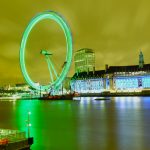A short discussion of the highs and lows along the much acclaimed coastline of Croatia. E&M considers some of the hotspots and gives you the pleasures and pitfalls.
A popular tourist destination even as part of the Former Yugoslavia, the Dalmatian Coast comprises what one can only understate as an extraordinary experience. A cascade of crystal blue ocean resorts and mountain ranges laced with canyons and forests, coastal islands covered in exotic seeming vegetation or else barren as a desert. Every destination boasts atmospheric old towns, palaces and fortresses dating back to the 4th century AD. Each seems to hold numerous music festivals throughout the summer months which augments an already vivacious nightlife. In these ways it caters for a wide variety of holiday makers like families, young couples looking for a romantic break, Euro-Trippers or students.
Growing up through the 1990s and watching footage shot on old three-tube colour cameras, mainly depicting fallout from nationalist struggle, didn’t provide the most impressive reference for this part of the world. Consequently, in spite of the many anecdotes from friends and colleagues, the intense character of the area came as something of a surprise. Not that it is without it’s shortcomings. When you think coastal holiday and therefore beach it is impossible not to think sand. Unfortunately the thought of sand is probably about as close as you will get to it and it is advisable to bring a pair of waterproofed, rubber shoes to prevent the jagged rocks from lacerating your feet. The cuisine, whilst unbeatable for seafood lovers, unfortunately leaves only a selection of pizzas, pastas and fast food options for those disinclined to fish. Furthermore, in the traditional style of mainland Europe, table service is the only kind. However the laid back atmosphere among the service staff at many restaurants and bars can be geriatric bordering on completely apathetic. Most of the coastline offers a reasonable standard of accommodation for an affordable price, but this does’t hold up for the more touristed areas where food, drink and lodgings can start to rival Central London.
During my time there I met Ross Cummings, a native of Scotland travelling with a group of friends, who was kind enough to share his thoughts on some of the destinations as well as the wider region and people.

The city of Zadar sits at northwestern end of the coastline and centres around a small peninsula on which sits the old town and heart of the city. Affordable hostels like the Four Corners and Old Town Hostel are located here within the roman walls of this beautiful area which can be walked around in less than half an hour. Tourists and locals swim off the southern marina in the mornings and evenings and play water polo in a roped off pool. Further on beside the tip of the peninsula are two works by the architect Nikola Bašić. The first is a series of pipes set into the stone beneath the promenade which the waves undulate through producing an eerie music. The Sea Organ sounds like several giants running wet fingers over the rims of enormous wine glasses and produces a pleasing atmosphere in the early evening light. The second is called the sun-salutation and consists of an enormous solar panel covered with flashing light patterns which put me in mind of several school discos I attended as a teenager. The latter piece was markedly less impressive than the first. The Garden Bar is a sofa, bed and cushion strewn bar/nightclub with two locations at either end of the Old Town, one on the tip overlooking the sea and the other on a raised section of the city walls. They are a little pricey but without a doubt one of the most enjoyable places to spend an evening and a difficult place to move from once you get settled.
An hour or so north of Zadar is a small town called Starigrad, which means “old town” in Croatian (as one rather obnoxious career-backbacker snidely informed me). The town itself is unremarkable but for the Paklenica park located just behind. There are numerous camping sites and a few guesthouses in addition to a large hotel. I would advise campers to shop around a bit for a nice spot to pitch and avoid a pebbly patch, something I learned a little too late. The path into the park gradually develops in to a wooded canyon with a river flowing through the bottom. The sides near the bottom are dotted with climbing enthusiasts making ponderous journeys up the vertiginous cliffs. Further and further up the forest becomes denser and cooler where the odd restaurant allows for a much needed break. Painted arrows on the trees and rocks lead to lodges which presumably house guests but didn’t appear to be teeming with life at the time.
The weather compared to other places I had travelled was like black and white, we had thunderstorms for the full time in Berlin but for the full 7 days I was in Hvar and Split, I don’t think I saw one cloud in the sky!
Looking out from the view points on the mountainside at Paklenica, one can see right across to the island of Pag; another destination on my list. The vast majority of the island looks quite like a scene from a Mad Max film, rocky, dry and baked. The town of Novalja and the nearby Zrce Beach are basically another Ibiza. Zcre hosts festivals like Hideout and Sonus in the month of August and provides 24 hour a day revelry to a multinational crowd. Accommodation around festival times should be booked well in advance to avoid sleeping on a deck chair. Two unfortunate university students were able to inform me that the heat is conspicuously absent when horizontally positioned on the beach at night. Buying tickets to the festivals would appear to be an unnecessary expenditure. Unlike most festivals around Europe the site at Zrce is open to the public and the tickets allow free entry and queue jump into the 4 clubs along the beach, 3 of which are venues for the performing artists. Since these can be paid into on any evening it would seem to make the purchase of a €140 ticket somewhat surplus to requirement.
Further south can be found Split, the largest city in the Dalmatia region and the hub for exploring the archipelago around it. It is home to, surprise surprise, an old town with a large Roman palace making up a considerable portion. My host was kind enough to inform me that they have all kinds of beaches there: large stones, small stones, sharp stones, large slabs of rock descending steeply into the sea and, miraculously, a sandy beach. Bacvice beach is located in the centre of the city and, though crowded, is a great place to spend an afternoon lounging about in the shallows and drying off in the bars and cafes. It hosts a couple of festivals throughout August which again can make accommodation difficult.

RC: I went to a concert on the beach in Split, they had different DJ’s playing throughout the night from 10pm until 6am with a massive stage built up on the beach just for the event. The music was great and it had a great vibe to it, with a bar selling drink on the beach and a small bar out in the water about 20ft across that you could wade over to.
A short boat ride away is the island of Hvar, with a passenger catamaran going to Hvar Town and a car ferry going to the small town of Stari Grad on the other side of the island, not to be confused with the aforementioned Starigrad north of Zadar. Yet another party rich area, Hvar Town is effectively Ayia Napa if it was designed by the residents of Monaco. It centres around a marina made of what looks like marble, houses a number of pricey looking superyachts and has the largest town square in Dalmatia. Two Venetian fortresses overlook the town from the mountainsides around it. The off licences and tobacconists around the harbour tell something of the clientèle. The fridges, normally occupied by high strength larger, house bottles of Bollinger, Verve Cliquot and Don Pérignon suggesting a very different class of alcoholics nearby. During the summer the bar Carpe Diem offers boat taxis out to their club venue on the close by island of Stipanska, an interesting novelty which can leave some surprising bruises to find the following morning.
RC: What I found particularly interesting was that my friends and I were able to go and island hop to the surrounding islands near Hvar. We rented out a boat for the day and went to the smaller ones to find some of the nicer beaches that we had heard about. We were able go to some of the bars and restaurants on these islands. I loved just being able to chill and take in all the views. I had took pictures on the way but none of them do the views justice. Although it wasn’t a festival as such, the Carpe Diem Beach Club was a great experience that I thoroughly enjoyed! The cost to stay and go out in Hvar was a little expensive I would say, but, I didn’t grudge paying the higher prices there as the place looked amazing and the atmosphere was great as I could see that everyone there was really enjoying themselves. Some of the beaches were a bit rocky for my liking but there were always some good ones not far away if I wanted to go.
Yet another party rich area, Hvar Town is effectively Ayia Napa if it was designed by the residents of Monaco.
On the other side of the island lies the much more scenic town of Stari Grad. At its centre is a larger, more rustic marina surrounded by small shops and restaurants. The architecture is much smaller but no less magnificent and some evenings choirs and youth bands make traditional music for the crowd of locals and holidaymakers while they dine. Bicycles can be rented for only a small amount and provide a pleasant way of exploring the flatter countryside nearby.
A short way to the south west, annoyingly close to, but difficult to access from, Hvar is the smaller island of Vis. Much quieter and off the tourist trail it can be a difficult place to find accommodation simply because there are fewer guest houses. You might find a few room touts near the ferry port but otherwise the only options are an expensive hotel or booking a home stay through one of the tourist offices along the seafront. The deceptively long marina has some art galleries and a large number of good quality restaurants. It also has a delightful open air cinema where viewers could watch classics such as Transformers 4 and Dwayne Johnson’s Hercules. Overlooking the town is the British built Fort George which holds a restaurant and an outdoor night club which looks out from the walls on panoramic scenes for nearly 360 degrees. Rather expensive taxis will take you to hidden beaches like Stoncica just around the coast. This out of the way spot has a small bar and restaurant with a really local feel and has at least 50% sand on the beach! The surrounding bay is covered with dense plant-life and offers stunning views while walking along the hillside paths which snake around the island.
I was surprised to see how much a sense of European identity was present among the Croatian People, especially considering it is only their second year of full EU membership and barely 20 years since their bloody exit from Yugoslavia. I found them for the most part a very pleasant and welcoming people.
RC: Croatia is very similar to the rest of Europe in many ways from what I found. The people are very friendly, the food and drink was brilliant. There were some really amazing sights to see, much like the rest of Europe, so I was never bored there as there was always something to do or go see. In other ways is was slightly different to some parts of Europe. The weather compared to other places I had travelled to was like black and white, we had thunderstorms for the full time in Berlin but for the full seven days I was in Hvar and Split, I don’t think I saw one cloud in the sky! The weather was second to none. My only regret about my stay in Croatia is that I never spent enough time there! I hadn’t realised there was as much to do until I got there and started speaking to people, so the Dalmatian Coast is definitely a place I hope to be visiting again, sooner rather than later!
I have discussed only the most memorable places from my experience on the Dalmatian Coast but there were many more islands and cities dotted along the coastline which other travellers held in high regard. With a long list of new places to visit I doubt I’ll be back there any time soon but I would recommend the destination to anyone looking for a unique experience on a wide variety of budgets. The days of rushing between 10 different countries in a short time would appear to be in the past for me and I had hoped to get a good feel for this one region in the three weeks I spent there. In the end I feel like I barely scratched the surface. I regret not taking more advantage of the opportunities to scuba dive, hike and do cheap bungee jumping (sort of…) but my first experience has definitely left me hungry for more.
Cover photo: Michael O’Keeffe, CC-BY-2.0










